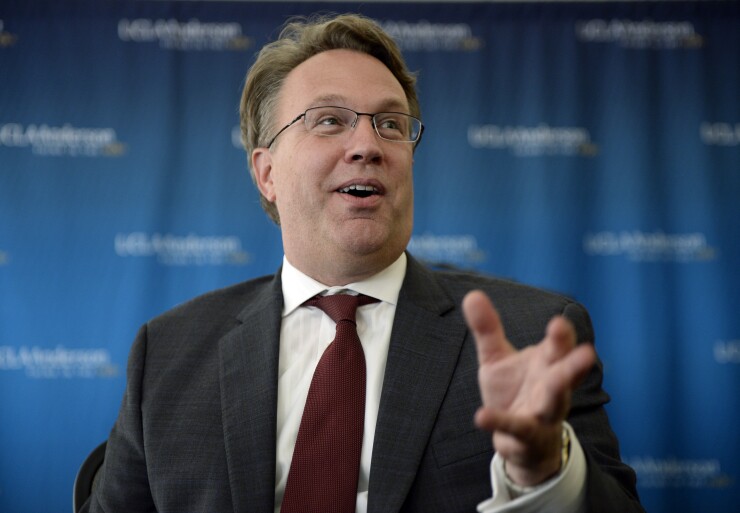With the neutral rate of interest rate (r-star) estimated at 0.5%, Federal Reserve Bank of New York President John Williams Thursday suggested the keys to successfully managing the economy in a downturn will be acting quickly, keeping rates lower longer and adapting.
When interest rates fall near zero, “you want to … vaccinate against further ills,” Williams told an audience in New York, according to prepared text released by the Fed. “When you only have so much stimulus at your disposal, it pays to act quickly to lower rates at the first sign of economic distress.”

When zero is in sight, his second suggestion “is to keep interest rates lower for longer,” to lower bond yields and foster “more favorable financial conditions,” allowing “the stimulus to pick up steam, support economic growth over the medium term, and allow inflation to rise.”
Policies that spur “temporarily higher inflation following ZLB episodes can help generate a faster recovery and better sustain price stability over the longer run,” he said. Models suggest doing so “can mitigate nearly all of the adverse effects of the ZLB.”
Data
Thursday’s numbers were mixed, with a manufacturing index surprisingly strong and leading indicators unexpectedly negative.
The Federal Reserve Bank of Philadelphia Report on Business’ general business conditions index soared to 21.8 in July, its highest reading in a year, from 0.3 in June, while the Leading Economic Index fell 0.3%.
The June decline in LEI was the first decline since December 2018, and was “primarily driven by weaknesses in new orders for manufacturing, housing permits, and unemployment insurance claims,” said Ataman Ozyildirim, senior director of economic research at the Conference Board. The yield spread was a negative contributor for the first time since late 2007, he said. “LEI suggests growth is likely to remain slow in the second half of the year.”
Economists polled by IFR Markets had expected the Philly Fed reading to be 5.0 and the LEI to rise 0.1%.
The Philly Fed six-month ahead general business conditions index soared to 38.0 in July from 21.4 in June.
The June decline in the current Philly Fed index could probably be attributed to threats by the administration to impose tariffs on Mexico, while the July rebound was aided by the resolution of that issue and the progress with China trade talks.
“Our hunch is that the Philly Fed index overstates the improvement, as headwinds linger, but the combined read of the surveys suggests that U.S. manufacturing activity appears to be stabilizing,” Berenberg Capital Markets chief economist U.S., Americas and Asia Mickey Levy and U.S. Economist Roiana Reid write in a note.
“The troubles that have plagued industry continue to linger — tariffs, trade tensions and uncertainties, China’s economic slowdown, slower global growth, declining trade volumes, the inventory overhang and the strong dollar,” they write. “However, U.S. manufacturers appear to be whittling down undesired inventories and coping with weak global demand, supported by the resilience of the domestic economy.”
Jobless claims
Initial jobless claims increased 8,000 to a seasonally adjusted 216,000 in the week ended July 13, the Labor Department reported, exceeding the 215,000 expectation. Continuing claims dropped to 1.686 million in the week ended July 6 from 1.728 million the week before.





